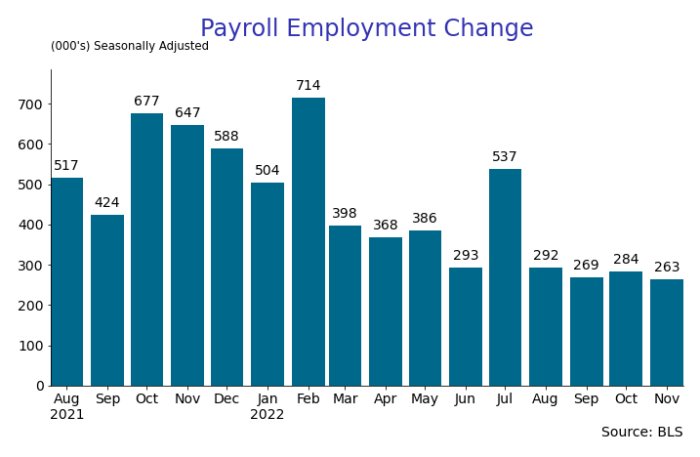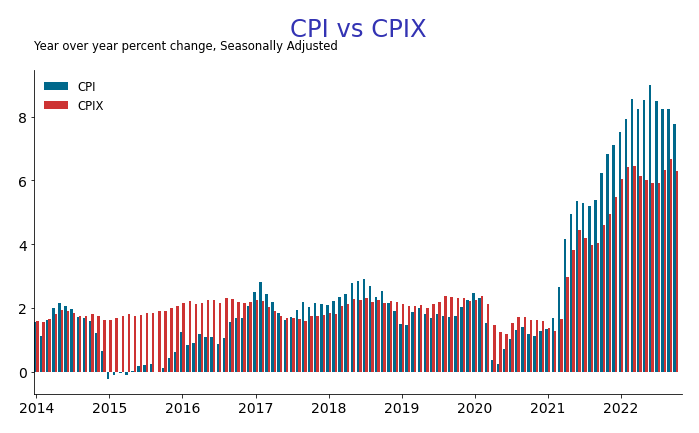Economics
November Employment Report
By Paul Gomme and Peter Rupert The BLS establishment data showed that payroll employment increased 263,000 in November. Combined revisions over the previous…

By Paul Gomme and Peter Rupert
The BLS establishment data showed that payroll employment increased 263,000 in November. Combined revisions over the previous two months totaled -23,000. Private sector employment grew 221,000, led largely by the service sector that increased 184,000. While these changes are pretty much in line with the past several months, other parts of the report, except for wage growth, were not so positive.



Usually, when the BLS data are revealed, an increase in employment is thought to translate into an increase in output. However, average weekly hours of work fell to 34.4 after a five month string of 34.5. Overall, total hours of work (multiply average hours by employment) fell slightly from October to November. If output per hour remained the same between October and November, the decline in total hours means there will be less output. The BLS announced their productivity estimates for Q3 this morning, showing output per hour increased 0.8% from the previous quarter on an annual basis. While average hours from the employment report fell in the previous month, the BLS reports that both output and hours increased in Q3, 3.3% and 2.5%, respectively.


Average hourly earnings rose 0.55% in November. On a monthly basis, this was a large increase. However, as shown below, year-over-year inflation continues to outstrip year-over-year nominal earnings which means that real earnings have declined. While overall CPI inflation (year-over-year) has fallen in recent months, the same cannot be said of the CPI excluding food and energy (CPIX). This means that the recent decreases in CPI inflation can be attributed to falling energy prices — anyone who goes to the grocery store knows that food prices are up over the past year.


For the second month in a row, the household survey showed a decline in the number of people employed. In addition, the labor force participation rate fell for the third straight month, to 62.1. These changes ended up lowering the unemployment rate from 3.68% to 3.65%.



The takeaway from the latest data shows that the labor market remains strong although the establishment and household surveys give conflicting messages. Monetary policy appears to have succeeded in reducing inflation, despite continued high prices of both food and energy.

Argentina Is One of the Most Regulated Countries in the World
In the coming days and weeks, we can expect further, far‐reaching reform proposals that will go through the Argentine congress.
Crypto, Crude, & Crap Stocks Rally As Yield Curve Steepens, Rate-Cut Hopes Soar
Crypto, Crude, & Crap Stocks Rally As Yield Curve Steepens, Rate-Cut Hopes Soar
A weird week of macro data – strong jobless claims but…
Fed Pivot: A Blend of Confidence and Folly
Fed Pivot: Charting a New Course in Economic Strategy Dec 22, 2023 Introduction In the dynamic world of economics, the Federal Reserve, the central bank…



















